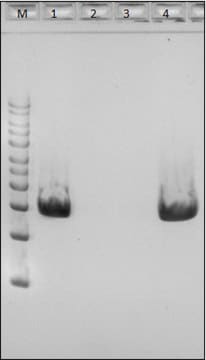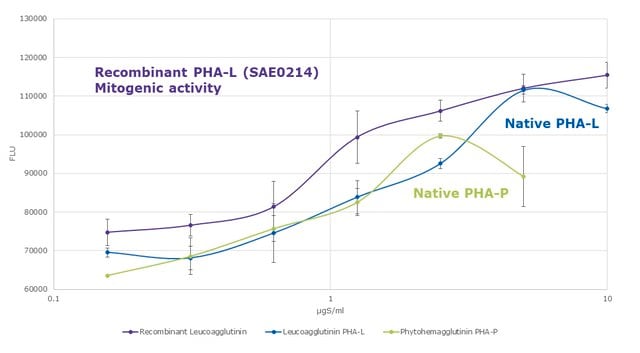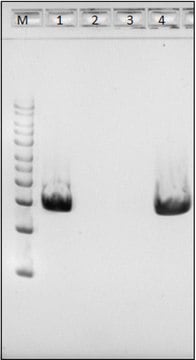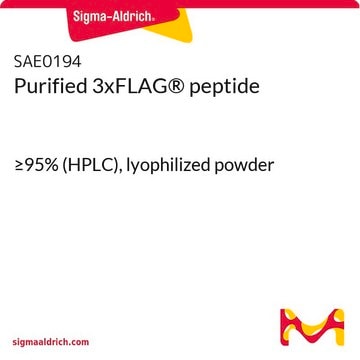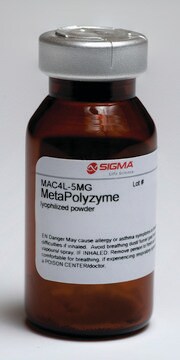MBD0064
ExoPolyzyme
For enzymatic lysis of extracellular biofilm matrix
Synonim(y):
Biofilm degrading enzyme mix, Extracellular matrix degrading enzymatic mixture
Zaloguj sięWyświetlanie cen organizacyjnych i kontraktowych
About This Item
Kod UNSPSC:
42312305
NACRES:
NA.32
Polecane produkty
Poziom jakości
Postać
solid
opakowanie
pkg of 1 vial
Warunki transportu
dry ice
temp. przechowywania
-10 to -25°C
Powiązane kategorie
Opis ogólny
Biofilms are complex structures, which adhere to surfaces and comprise of one or more types of bacteria and fungi. They form an extracellular matrix (ECM) which is generally composed of secreted polymers such as exopolysaccharides (EPS), extracellular DNA (eDNA), peptides and lipids. ExoPolyzyme is a mixture of seven enzymes that break down different components residing in ECM, such as EPS’s and lipids. Each of these enzymes has been previously used to inhibit or remove biofilm. The original development was in collaboration with Scott Tighe and the Extreme Microbiome Project.
Zastosowanie
ExoPolyzme can be used in biofilm research and as a gentler method for removing the EPS and lipids from the ECM in metagenomic protocols, providing better access to the bacterial cells within the biofilm and eDNA.
Cechy i korzyści
- Mixture of seven enzymes that break down different components residing in ECM, such as EPS’s and lipids
- Gently removes the EPS and lipids from the ECM in metagenomic protocols
- Allows better access to the bacterial cells within the biofilm and eDNA
Komponenty
The components in ExoPolyzyme (MBD0064) are:
- α-Amylase
- Cellulase
- β-Glucosidase
- Lyticase
- Alginate lyase
- Lipase
- Hemicellulase
Hasło ostrzegawcze
Danger
Zwroty wskazujące rodzaj zagrożenia
Zwroty wskazujące środki ostrożności
Klasyfikacja zagrożeń
Resp. Sens. 1
Kod klasy składowania
11 - Combustible Solids
Klasa zagrożenia wodnego (WGK)
WGK 3
Certyfikaty analizy (CoA)
Poszukaj Certyfikaty analizy (CoA), wpisując numer partii/serii produktów. Numery serii i partii można znaleźć na etykiecie produktu po słowach „seria” lub „partia”.
Masz już ten produkt?
Dokumenty związane z niedawno zakupionymi produktami zostały zamieszczone w Bibliotece dokumentów.
Nasz zespół naukowców ma doświadczenie we wszystkich obszarach badań, w tym w naukach przyrodniczych, materiałoznawstwie, syntezie chemicznej, chromatografii, analityce i wielu innych dziedzinach.
Skontaktuj się z zespołem ds. pomocy technicznej